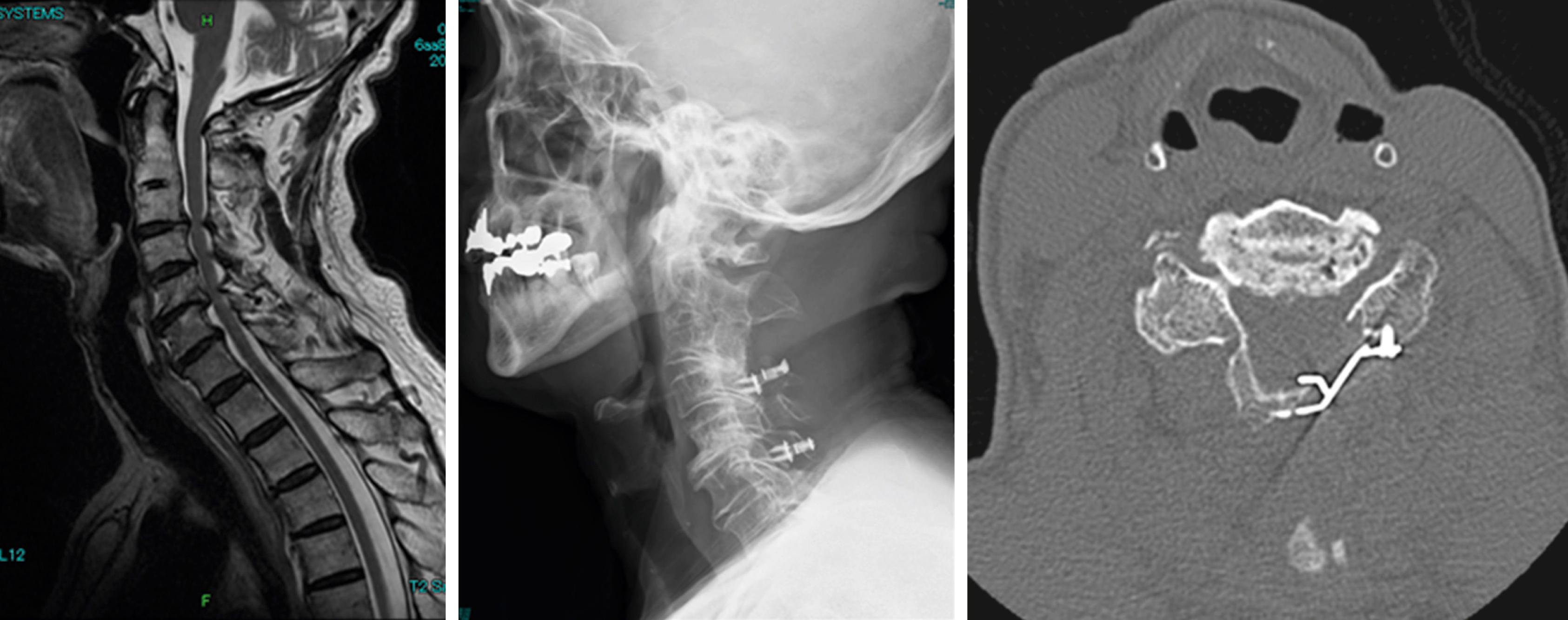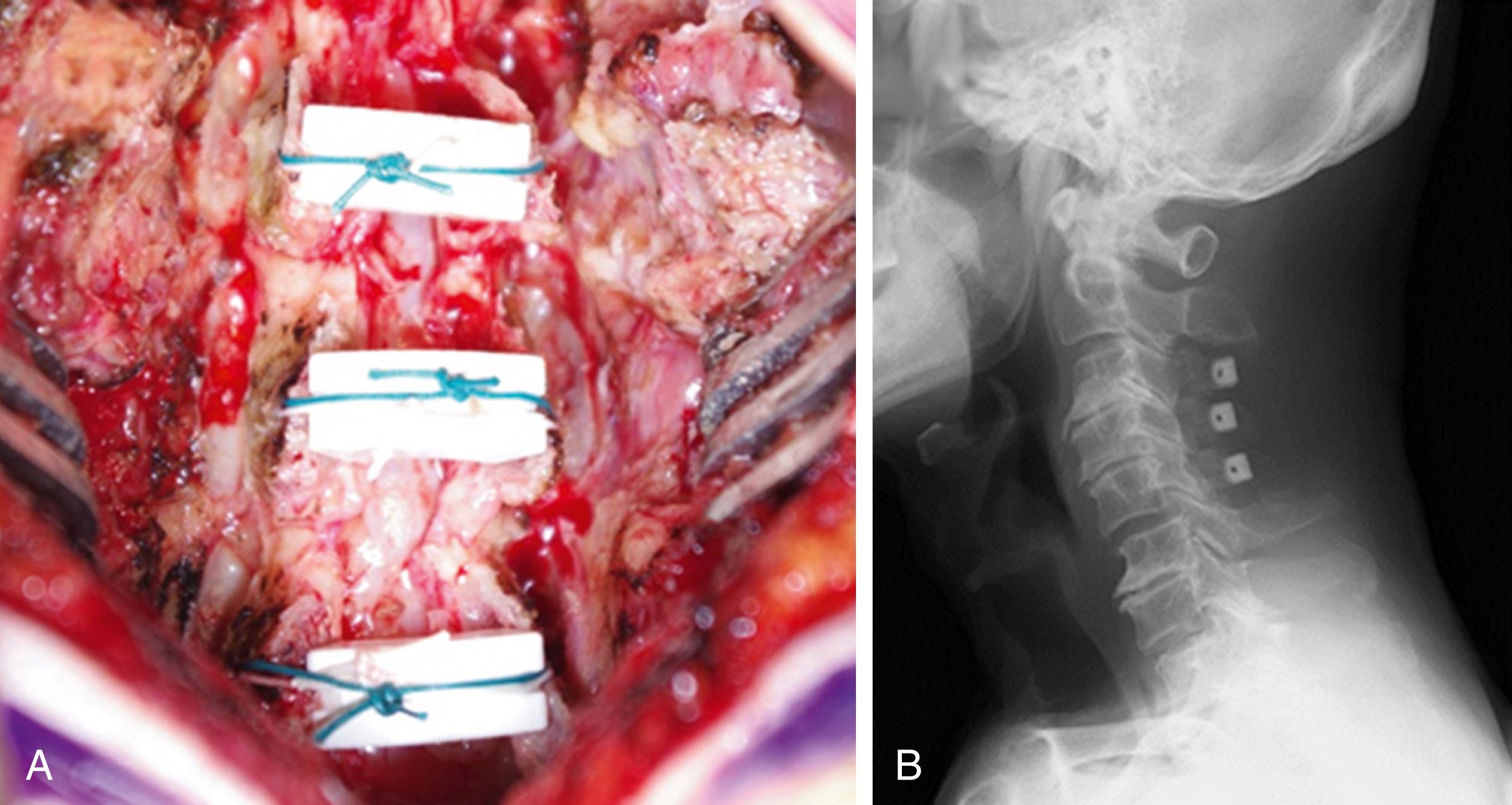Physical Address
304 North Cardinal St.
Dorchester Center, MA 02124
Open-door laminoplasty and double-door laminoplasty are the primary surgical treatment for patients with cervical spondylotic myelopathy and ossification of the posterior longitudinal ligament (OPLL).
Cervical laminoplasty is indicated for patients with multisegmental canal stenosis and lordotic alignment.
Laminoplasty is not recommended in patients with kyphotic cervical alignment, spinal instability, or larger OPLL occupation ratio or disc herniation. In these cases, fusion surgery should be selected.
Laminoplasty provides stable and favorable neurological outcomes if chosen for the appropriate surgical indications.
Closure of expanded laminae, segmental motor paralysis, and axial neck pain are representative complications after laminoplasty. It is of great importance to develop strategies for reducing these risks to improve the efficacy and safety of the laminoplasty.
Since the late 1960s, in concurrence with anterior fixation surgery, laminectomy was performed in patients with cervical spondylotic myelopathy (CSM). However, instability between vertebral bodies occurred because of the removal of the posterior bony and ligamentous supporting structures, which led to kyphotic deformity progression. As one of the causes of worsening of postoperative symptoms, restenosis attributed to laminectomy membrane formation was another critical problem.
Because of these circumstances, open-door laminoplasty was developed by Hirabayashi. Laminectomy was performed by drilling only the bilateral groove, without invading the midline of the laminae. After drilling one side of the gutters and lifting the laminae, the dura mater was sufficiently decompressed, with good pulsation. Hence, open-door laminoplasty was developed. Kurokawa reported double-door laminoplasty, which involved drilling the midline of the laminae and making a gutter on both sides of the laminae.
Although some modifications have been made, both open-door laminoplasty and double-door laminoplasty have been widely recognized as the primary treatments for CSM and cervical ossification of the posterior longitudinal ligament (OPLL). The surgical outcomes from these procedures are virtually identical, and these surgical procedures are widely used, as they are considered safe and useful ( Figs. 106.1 and 106.2 ).


Cervical laminoplasty is generally indicated for patients with multisegmental canal stenosis and lordotic alignment. Developmental cervical canal stenosis is a good indication for this technique. Because laminoplasty is technically simple and convenient, it is suitable for decompressing three or more segmental levels in CSM and OPLL patients. This procedure is not recommended in patients with kyphotic cervical alignment, spinal instability, or larger OPLL occupation ratio or disc herniation. In these cases, fusion surgery should be performed.
Become a Clinical Tree membership for Full access and enjoy Unlimited articles
If you are a member. Log in here